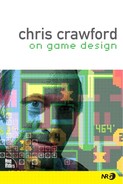Thinking Big
In 1983, I was asked to attend a meeting in Southern California to discuss a standard for CD-I, a scheme to build a CD player that would include interactive elements. The standard was being put together by Sony and Philips. The meeting consisted of about 20 people: engineers from Philips, a few Hollywood people, and some Atari Research people, including Alan Kay and myself. Like any huge committee meeting, this was a ghastly bore and a great waste of time, as the engineers picked over lots of tiny details that would only be significant much later in the standards-setting process.
I had looked over the technical specifications and was disturbed by the limited processing power that the standard included: They were contemplating an 8-bit, 1MHz processor with a few KB of RAM. After several hours, there was a lull in the discussion and I saw my opportunity. I plunged in with my concern about the limited processing power, noting that interactivity relies heavily on processing power. I dismissed the 8-bit processor as too weak to take proper advantage of the data capabilities of the CD. And then I staked my claim: CD-I needed to have nothing less than the latest, most powerful processor available: a 16-bit 68000 running at 8MHz, equipped with at least 64K of RAM.
Having blurted out my little speech, I looked around the room nervously to gauge the reaction. It was one of stunned silence. I could see the Philips engineers staring at me with looks of utter incredulity on their faces; they obviously thought that I had lost all touch with economic realities. It was Alan Kay who broke the long silence. “Is that all?” he asked. “This machine is going to need a lot more horsepower than that!”
